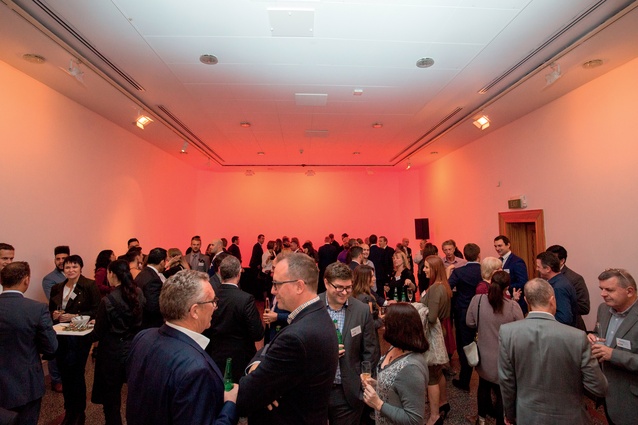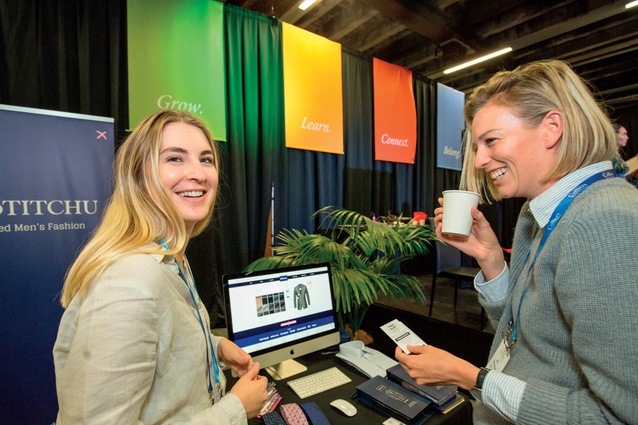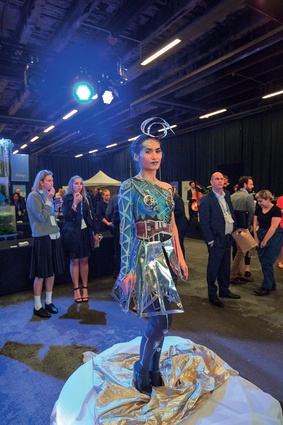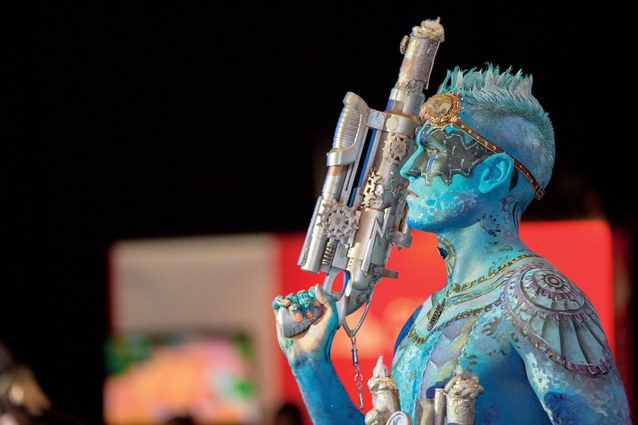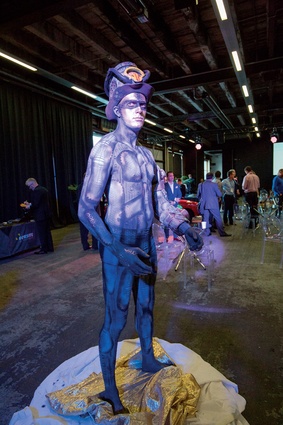Humanity and the machine
Camille Khouri reports from this year’s CoreNet Symposium.
Shed 10 was perhaps not the best place to be located on what felt like Auckland’s windiest day of the year, but the speakers at this year’s CoreNet Symposium, with their mind-blowing facts and figures about the robotic future we are heading for, mostly drowned out the creaks and bangs of the building’s movements during the gale.
The morning began with architect, urbanist and entrepreneur László Varga from Stanford University, who spoke about the human element of digitalisation. He showed how you can use data from internet users to determine what people want from their real estate, and how this can help to create more human-centric workplaces. “Technology now takes up less room; this means more space for humanity,” he said.
Varga looked back in history to the utopian cities designed by Frank Lloyd Wright and Le Corbusier, and how they could be blamed for the sprawling suburbia we are experiencing in Auckland now. Similarly, he spoke about the German invention of the large office space separated into many cubicles, which is something most workplaces have now moved away from.

This formed an apt introduction to the experimental lifestyle of Per Håkansson of Makerminds. A self-proclaimed ‘restless soul’, Håkansson has lived in more than 70 countries. His big idea is “to change at the pace of change, learn to let go and embrace the future now.” To do this, he has embraced all the technological opportunities available and dematerialised his life, selling his house and most of its contents, and leaving himself with only what he needs.
He lives in Airbnb and ‘shared’ houses full-time, and stores what few things he needs to own at a digitalised storage company in San Francisco (each item in storage can be accessed on his phone and delivered to wherever he is in the world).
He moves about via Uber and deals in bitcoin. He encouraged the somewhat dubious crowd to move into this mind-set at least to some extent, as it has left him with more time and space to do what he enjoys. “It’s not about tech; it’s about the human condition,” he said.
After morning tea, Chris Lunny and John Tenanes from Facebook presented a history of the Facebook workspace, spanning back to the Harvard dorm room where it started, to the sprawling village where Facebook now has its Gehry-designed headquarters in Palo Alto, California.

A stark contrast to the minimalist, digital lifestyle of the previous speaker, Facebook has invested heavily in real estate. The workplaces appeared chaotic in style, but as the speakers pronounced, “the moneyshot is not important – function and productivity are key”. The offices appeared slightly industrial, user-friendly and upbeat, with outdoor break-out spaces and connected pathways, such as stairways and bridges, between buildings.
They spoke about how Facebook is a company without a lot of hierarchy, so a vertical tower would not have worked. They have a high level of digitalisation in their buildings, with automated facility management systems, and smart sensor lighting and air control.
The next presentation was from AUT’s Dr. Barbara Bollard-Breen, who works with drones. She talked about the future of drone technology, and how they are currently used in areas where human access can be risky. A recent project saw her sending out drones to plot the wild Rangitikei River, looking for evidence of a noxious weed. She has also worked in Antarctica and Namibia.
Aside from the beautiful photography she presented from these areas, Bollard-Breen brought up some interesting points about the future of drones, which we are likely to see in larger numbers as their application becomes more widespread.
“Drones will soon work together in ‘flocks’ and their airspace will need to be controlled,” she said, explaining that even casual users of drones should log their flights, to prevent accidents. She talked about the huge data storage problem drones present too, as even one flight can generate thousands of photographs.
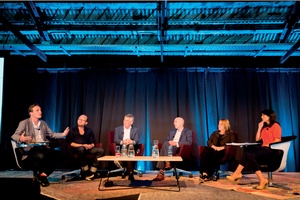
These speakers returned after lunch for the CoreNet Conversation, where delegates were able to ask questions about what they had heard so far. The resulting discussions covered such ground as: the issue of data (Facebook has many data centres globally); being a global citizen (“New tools are navigating us to be global beings, online we can be ranked not by our passport but by who we are,” said Håkansson); and the importance of social media in this digital age (“It gives us a mind-set for thinking in this ecosystem. The next generation lives in this world already,” said Varga).
Next up, the crowd was given a choice to move downstairs to see Oliver Marlow of Studio Tilt, presenting via digital feed from London, or to stay upstairs for a presentation on New Zealand tech companies. I opted for Marlow, who talked about the problem of living in a ‘complexity era’, where there are so many opportunities for disruption. He said the rate of change between generations is so fast that new workplaces must cater for more than one generation of workers, who do things differently.
Millennial workers call for spaces that inspire, as well as providing for basic health needs. He pointed to such fun, vibrant spaces as the Google headquarters, with their workplace slide, or the ‘corporate cathedral’ of the circular Apple HQ as being more about creating a brand than providing for its workers.
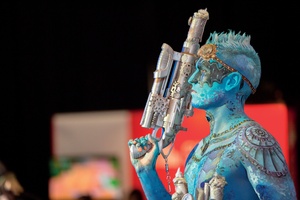
This idea harked back to the images we had seen earlier of the seemingly messy but user-friendly Facebook offices. He said, “An organisation has to understand itself to know its direction,” and talked about the flawed idea of making spaces where staff can be creative, when in actual fact the garage is often the starting place for innovation, and ideas tend to spring forth when you are not thinking about them. “You can build spaces, but they won’t get used unless you focus on the people,” he said.
After everyone had replenished themselves with some afternoon tea, the delegates reconvened for an energetic and slightly mind-blowing presentation by the closing speaker, John Spence, who began by telling us that by 2020, computers will be as smart as humans.
He presented a number of images and videos of cutting edge technologies, mostly used by the military, such as the BigDog robot, which can outrun Usain Bolt and carry 450kg, robotic machine guns for which friendly soldiers will need to have a tiny chip implanted to prevent being shot at, and tiny drones the size of a hummingbird which can be set to follow a ‘bad guy’ and automatically recharge by sitting on a nearby power line when low on juice.
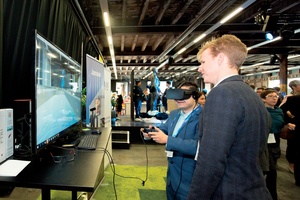
Apart from terrifying the crowd with these innovations, Spence had a few things to say about how to be a successful employer and attract the best employees. “Almost everything can be copied but it’s your relationships and communication that allows you to gain the market advantage,” he said.
There was plenty to discuss at the closing cocktails, where delegates were joined by three walking artworks: two men and a woman with robotic style bodypainting, which had slowly been created downstairs as the day progressed. The general consensus among the crowd was that the day had been filled with many insights and a good deal of wonder and excitement for the future of work and technology.


